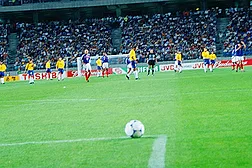Home » acrylics
Articles Tagged with ''acrylics''
Stories focused on finished adhesives were popular again this year.
Read More
Ask Dr. Dave: What are the best products for filling the seams after assembling acrylic countertops?
Reactive acrylic adhesives vary from surface-activated flexible adhesives to two-component adhesives.
October 1, 2014
Improving Assembly with Fastener and Component Enhancement Materials
Adhesives, sealants and coatings have made great strides in improving the reliability of fastener systems.
September 2, 2014
Ask Dr. Dave: Why are some waterborne adhesives called latex, others called dispersions and yet others emulsions?
Dave Dunn's August 2014 column.
August 1, 2014
Ask Dr. Dave: What is a good adhesive for bonding glass to metal?
Dave Dunn's May 2014 column.
May 1, 2014
Adhesives and Sealants at the 2014 FIFA World Cup™
We’ll be using our What’s New section in the June issue to highlight adhesives, sealants and coatings products that will be used for the tournament.
March 12, 2014
Ask Dr. Dave: How should I choose between an acrylic adhesive and an epoxy?
Dave Dunn's January 2014 column.
January 2, 2014
Keep the info flowing with our newsletters!
Get the latest industry updates tailored your way.
JOIN TODAY!Copyright ©2025. All Rights Reserved BNP Media.
Design, CMS, Hosting & Web Development :: ePublishing







